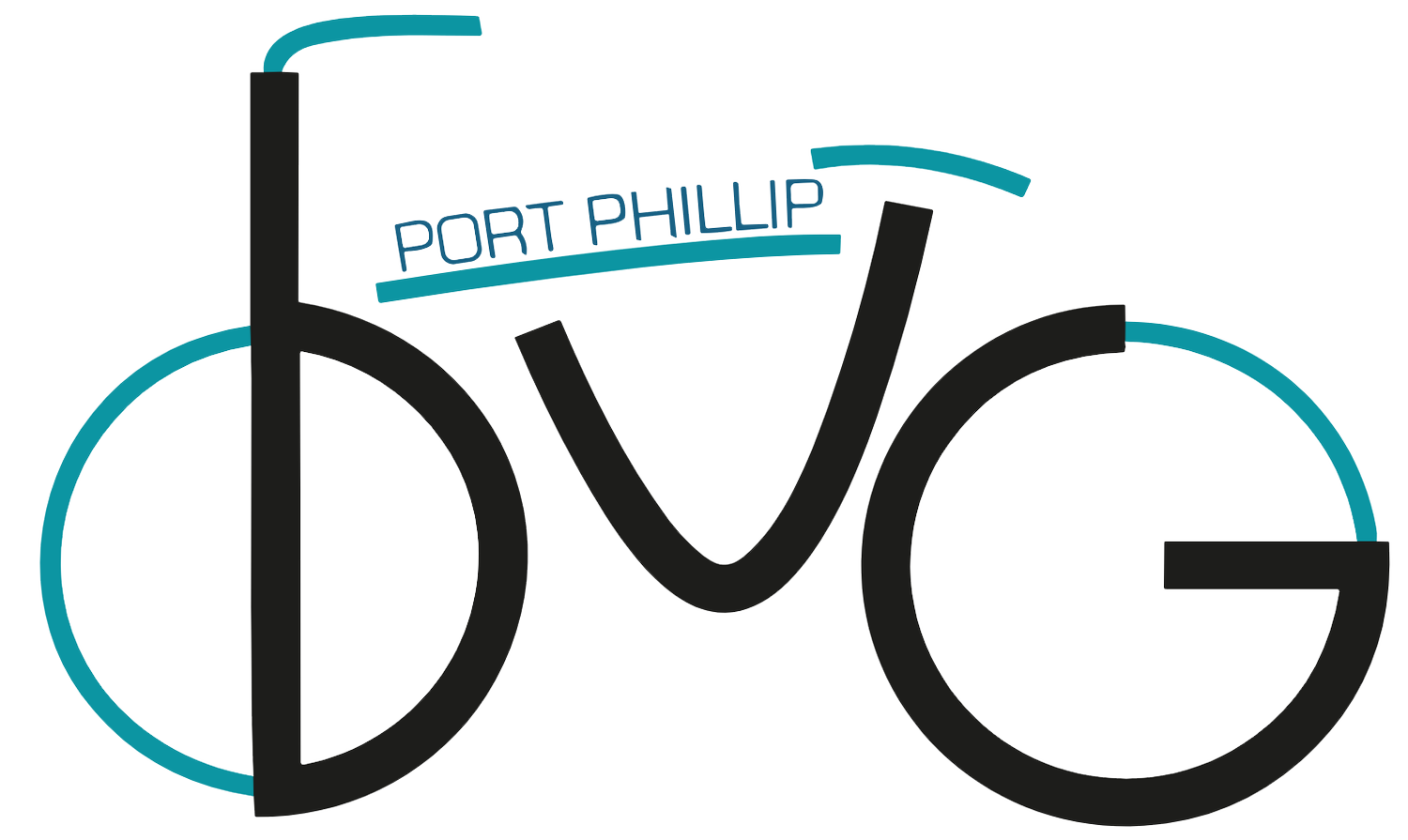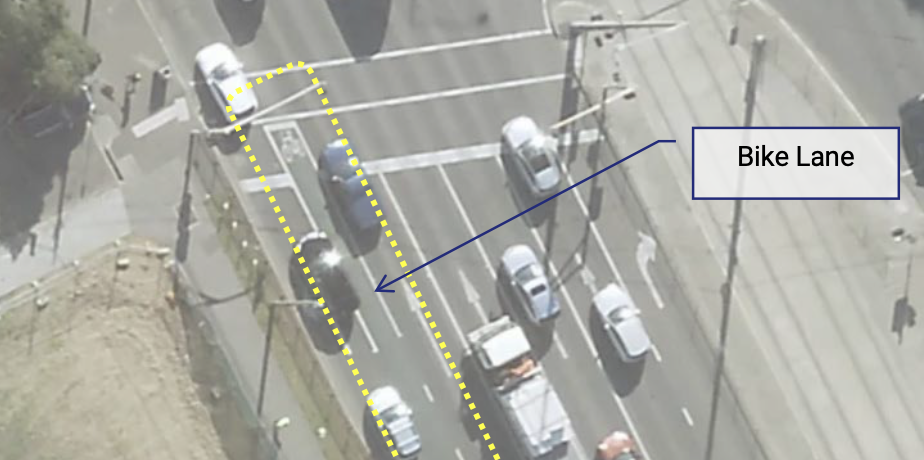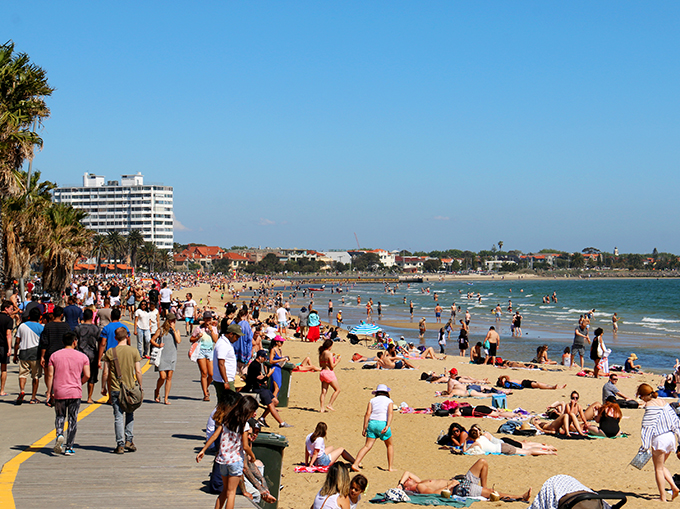Traffix also makes an overly big deal about conflicts with left-turning lanes at the newly separated intersections on Marine Parade and Park Street, even though these conflict points now occur at much lower speeds. Traffix asserts that minor concerns like this make the entire separated trial unsafe for motorists and cyclists: this is not just over-egging the issue, it is directly contradicted by the extensive research cited above.
We strongly support the retention of the Park Street pop-up separated bike lanes. We love the new St Kilda Road separated bicycle lanes and we look forward to the Kerferd Road separated lanes being implemented as part of the Shrine to the Sea project.
Traffic Congestion
The Traffix report does not find that the pop-up trial exacerbates traffic congestion, despite this being claimed by a RoPP spokesperson on their website. To be clear, the report does not make any findings or recommendations on the issue of traffic congestion and for RoPP to claim otherwise is blatant misinformation.
Motorist Safety
The report’s conclusion claims that the overall trial offers "an increased risk to road users" including “motorists”, yet evidence in the report in support of this for this bold claim is scant.
The report's review of separated bicycle infrastructure greatly exaggerates the increased risk of conflict between bicycles and cars, as noted above for Marine Parade and Park Street.
The report erroneously does not identify the asymmetric nature of conflicts between bicycles and cars, with the person riding the bike obviously much more at risk than the driver and occupants of the vehicle. Deliberately conflating the two risks as being equivalent is a misrepresentation of road safety issues.
The "community reports" of "confused" motorists driving on new separated bicycle lanes in Marine Parade is most likely a teething issue associated with the introduction of new infrastructure. There is no data supporting Traffix’s claim that the bicycle lanes pose any continuing safety risk to motorists. There is also evidence that the risk to cyclists is far greater for painted bicycle lanes than for separated lanes.
The report only identifies one isolated instance of increased risk to motorists, which relates to the circumstances at Deakin Street in St Kilda West. In this case, the report identifies some simple ways to mitigate the increased risk, namely adding a painted centreline and road narrowing warnings. However, the report fails to mention these safety solutions, or any others, in its findings and recommendations. This is an extraordinary omission for a "safety" report! Given Deakin Street's wide pavements, low traffic speed and low traffic volumes, there are many simple safety solutions that could work well for all road users in this space.
Who is cycling infrastructure for?
Traffix's strong preference for painted bike lanes reflects outdated engineering assumptions that all cyclists are fit, adult males in lycra. As per the research cited in The Conversation, 3 in 4 people want safe cycling routes, which particularly for women, means separated cycling infrastructure.
There is community demand for safe cycling routes that better suit a wider demographic: parents doing the childcare drop-off on the way to work, kids cycling to school, families going to the beach, and seniors who like getting around by bike 'cos it's easier on the old knees' than walking.
Marine Parade
Marine Parade is a central part of one of Melbourne's most popular and iconic on-road cycling routes. The road has well-known safety issues, including at the intersections targeted by the pop-up trial. We therefore disagree with Traffix's recommendation that targeting safety improvements at these notorious intersections is not worthwhile. As with the rest of the trial, we look forward to a complete review being made at the end of the 12-18 months period when more data is available.
Apart from intersections, we note the other significant safety issue for cycling on Marine Parade is the lane interruptions by on-street parking, such as at Donovan's restaurant and at Catani Gardens. We would welcome RoPP making a positive intervention to address these issues, rather than the crocodile tears on display here.
Get off the Road!
For the section of Marine Parade between Fitzroy Street and Glen Huntly Road, Traffix claims that the ‘pop-up’ bicycle lanes on Marine Parade “are in locations where there is already an existing two- way off-road bicycle path that runs parallel to Marine Parade adjacent to the western side of the road. This path is fully separated from traffic.” (As an aside: professional traffic engineers ought to know the difference between a shared user path and a bicycle path).
Apart from the middle third, this statement is incorrect for the majority of this 2.2km section, because:
a. in the southern section, from Dickens St to Glenhuntly Rd, the off-road path detours through the marina car park – where it is a shared path with pedestrians – and then makes a long detour around Moran Reserve and Point Ormond. There is no direct connection to Glenhuntly Road from the Bay Trail.
b. in the 850m long northern section, from Shakespeare Grove to Fitzroy St, there is no two-way off-road bicycle path at all. The popular St Kilda foreshore promenade is a shared cyclist-pedestrian space. This section is a high accident zone between pedestrians, cyclists and scooters. At its busier times, the crowded promenade is not a safe place for riding bicycles or scooters.





























